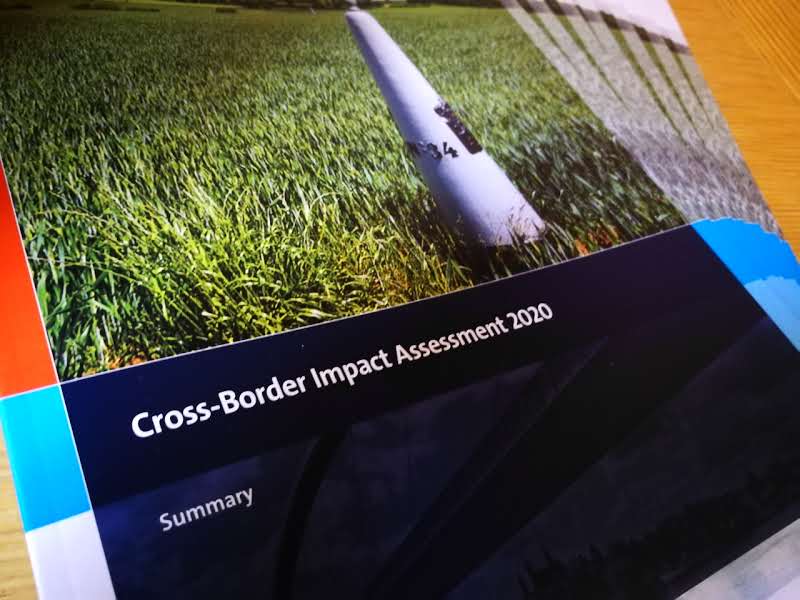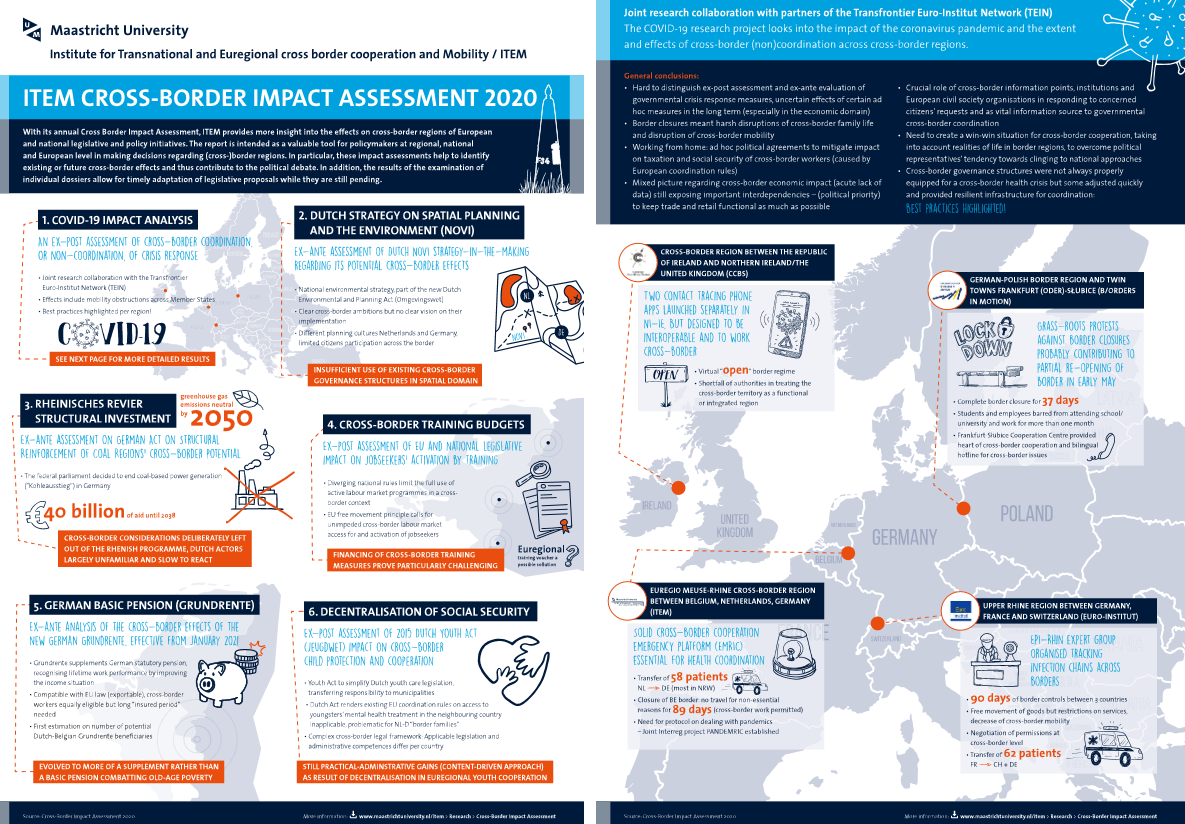ITEM Cross-Border Impact Assessment 2020 published
In border regions, national approaches to managing the corona crisis sometimes seem absurd. This is shown by the Cross-Border Impact Assessment 2020 that expertise centre ITEM publishes today. The report on the cross-border coordination, or non-coordination, of crisis response during the ‘first wave’ of the COVID-19 pandemic is one of six dossiers that examine the impact of policy and legislation on cross-border regions.
With its own impact assessment methodology, the Institute for Transnational and Euregional cross border cooperation and Mobility / ITEM studies cross-border effects to provide more insight into European and national legislative and policy initiatives. The report is intended as a valuable tool for policy makers at regional, national and European level when taking decisions on legislation and regulations with (additional) effects for (cross-)border regions. The research offers background and input to the political debate and even during the legislative process.

| The Cross-Border Impact Assessment 2020 can be found on the ITEM Cross-Border Portal |
The ITEM Cross-Border Impact Assessment 2020 contains six dossiers that deal with a broad array of current cross-border issues. A distinction between ex ante assessment or ex post evaluation is not always easy to make. By addressing three overarching research themes – European integration, Sustainable/socio-economic development, and Euregional cohesion – each dossier puts a different emphasis depending on their study subject. This year’s topics are as diverse as they are compelling:
The first dossier, the COVID-19 impact analysis, is the product of a first and successful joint research collaboration with partners from the Transfrontier Euro-Institut Network (TEIN). When the pandemic first hit Europe, cross-border governance structures were not always properly equipped for a cross-border health crisis. Suddenly, the “border” became real again. The study discusses, amongst others, the causes for and effects from these mobility obstructions and other multifaceted challenges in the light of the three research themes. It contains four regional reports. For more information, see here: European cross-border approaches to the corona crisis are hard to find.
The second and the third dossier particularly highlight aspects important to the socio-economic development of cross-border regions: the studies show there is still room for (much) improvement when it comes to cross-border planning in the physical domain. Dossier 2 reveals how the Dutch strategy on spatial planning and the environment (NOVI) still seems to make insufficient use of existing cross-border governance structures between Germany and the Netherlands in the spatial domain. As part of the new Dutch Environmental and Planning Act (Omgevingswet), this ex-ante assessment shows that the NOVI-strategy has clear cross-border ambitions but lacks clear vision on their implementation. A similar picture emerges in Dossier 3 where cross-border considerations have been deliberately left out of the upcoming German structural investment programme to help make the Rhenish (coal) district greenhouse gas emissions neutral by 2050. Equally, awareness and ambitions on the Dutch side of the border adjacent to the Rhenish district are still limited regarding the programme’s potential for regional development.
The theme of European integration is the most prominent in Dossier 5 dealing with the cross-border effects of the proposed German "basic pension" (Grundrente), effective from January 2021. The Grundrente supplements the German statutory pension, recognising lifetime work performance by improving the income situation rather than being a basic pension combatting old-age poverty. This ex-ante analysis highlights that the Grundrente has been found compatible with EU law (exportable). Its eligibility criteria thus equally apply to cross-border workers (estimated number of potential beneficiaries in Belgium and in the Netherlands is around 11%) but a long “insured period” is required. More clarity is needed on the required administrative actions vis-à-vis the German statutory pension authority DRV.
Last but not least, the fourth and sixth dossiers are most elaborate on aspects of Euregional/cross-border cohesion and, particularly, the impact of governance structures. On the one hand, the corona pandemic increasingly sharpens the asymmetric crisis that (Eu)regional labour markets are facing. The ex-post assessment of European and national legislation in Dossier 4 underlines, in this regard, the importance of jobseekers in the border region having access to cross-border training in the Southern Dutch-German border region. Nascent structures of cross-border employment services (SGA) already make a crucial and valued contribution to the cross-regional economy. Yet, their functioning can still be further enhanced. Addressing important legal and administrative mismatches between the participating public service providers could help tackling growing (euregional) mismatches between labour supply and demand. On the other hand, Dossier 6 shows that sophisticated collaboration structures as they exist in the Euregional Youth Cooperation in the Belgian-German Dutch border region provide fruitful ground for successfully absorbing and capitalising on far-reaching institutional changes on one side of the border. The Dutch Youth Act of 2015 put Dutch municipalities in charge of providing youth care. The study reports practical-administrative gains in the cross-border cooperation as a result of this decentralisation, whilst the legislative change has however rendered access to adequate youth healthcare provision for “border families” actually more problematic.
ITEM Cross-Border Impact Assessment 2020

The Summaries are available English, German, Dutch and French
ITEM Cross-Border Impact Assessment 2020 - Summaries
Our most prominent results are presented in a set of two infographics
ITEM - Cross-Border Impact Assessment 2020 - Infographics
The main infographic shows prominent results of the Cross-Border Impact Assessment 2020.
Additionally we included an infographic this year, which is complimentary to dossier 1: "The impact of the Corona crisis on cross-border regions"
Read More:
November 2020 - European cross-border approaches to the corona crisis are hard to find
March 2020 - Cross-Border Impact Assessment 2020: Corona mainly controls the cross-border situation
More information about ITEM's annual Cross-Border Impact Assessment